
Zenas Winsor McCay was an American cartoonist and animator. He is best known for the comic strip Little Nemo and the animated film Gertie the Dinosaur (1914). For contractual reasons, he worked under the pen name Silas on the comic strip Dream of the Rarebit Fiend.

Liberty is a town in DeKalb County, Tennessee, United States. The population was 367 at the 2000 census and 310 in 2010. Liberty's main street was listed on the National Register of Historic Places in 1987 as the Liberty Historic District.

Puck was the first successful humor magazine in the United States of colorful cartoons, caricatures and political satire of the issues of the day. It was founded in 1876 as a German-language publication by Joseph Keppler, an Austrian immigrant cartoonist. Puck's first English-language edition was published in 1877, covering issues like New York City's Tammany Hall, presidential politics, and social issues of the late 19th century to the early 20th century.
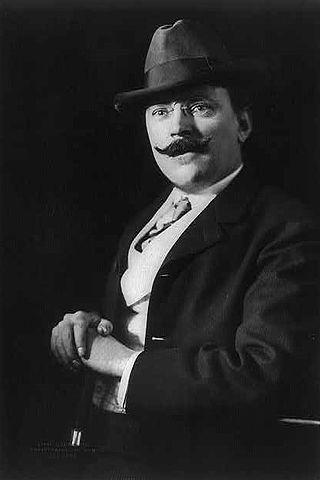
Richard Felton Outcault was an American cartoonist. He was the creator of the series The Yellow Kid and Buster Brown and is considered a key pioneer of the modern comic strip.

International Film Service (IFS) was an American animation studio created to exploit the popularity of the comic strips controlled by William Randolph Hearst.

Frederick Burr Opper was one of the pioneers of American newspaper comic strips, best known for his comic strip Happy Hooligan. His comic characters were featured in magazine gag cartoons, covers, political cartoons and comic strips for six decades.

King Features Syndicate, Inc. is an American content distribution and animation studio, consumer product licensing and print syndication company owned by Hearst Communications that distributes about 150 comic strips, newspaper columns, editorial cartoons, puzzles, and games to nearly 5,000 newspapers worldwide. King Features Syndicate also produces intellectual properties, develops new content and franchises, like The Cuphead Show!, which it produced with Netflix, and licenses its classic characters and properties.
Luciano Bottaro was an Italian comic book artist.
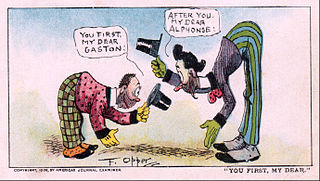
Alphonse and Gaston is an American comic strip by Frederick Burr Opper, featuring a bumbling pair of Frenchmen with a penchant for politeness. It first appeared in William Randolph Hearst's newspaper, the New York Journal on September 22, 1901, with the title "Alphonse a la Carte and His Friend Gaston de Table d'Hote". The strip was later distributed by King Features Syndicate.

A topper in comic strip parlance is a small secondary strip seen along with a larger Sunday strip. In the 1920s and 1930s, leading cartoonists were given full pages in the Sunday comics sections, allowing them to add smaller strips and single-panel cartoons to their page.

James Guilford Swinnerton was an American cartoonist and a landscape painter of the Southwest deserts. He was known as Jimmy to some and Swinny to others. He signed some of his early cartoons Swin, and on one ephemeral comic strip he used Guilford as his signature. Experimenting with narrative continuity, he played a key role in developing the comic strip at the end of the 19th century.

Frances Edwina Dumm was a writer-artist who drew the comic strip Cap Stubbs and Tippie for nearly five decades; she is also notable as America's first full-time female editorial cartoonist. She used her middle name for the signature on her comic strip, signed simply Edwina.
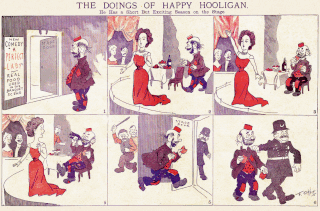
Happy Hooligan is an American comic strip, the first major strip by the already celebrated cartoonist Frederick Burr Opper. It debuted with a Sunday strip on March 11, 1900 in the William Randolph Hearst newspapers, and was one of the first popular comics with King Features Syndicate. The strip ran for three decades, ending on August 14, 1932.
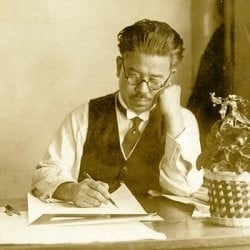
Kitazawa Yasuji, better known by the pen name Kitazawa Rakuten, was a Japanese manga artist and nihonga artist. He drew many editorial cartoons and comic strips during the years from the late Meiji era through the early Shōwa era. He is considered by many historians to be the founding father of modern manga because his work was an inspiration to many younger manga artists and animators.
This is a timeline of significant events in comics in the 1900s.

Charles Nelson Landon was an illustrator for The Cleveland Press, art director for the Newspaper Enterprise Association and art editor of Cosmopolitan. He is most notable as the founder of the Landon School of Illustration and Cartooning, a mail-order correspondence course that trained a generation of leading syndicated cartoonists in drawing for publication.

Thomas Starling Sullivant was an American cartoonist who signed his work T. S. Sullivant. His work appeared most frequently in the pages of the humorous Life magazine. Best known for his animal and ethnic caricatures, he also drew political cartoons and comic strip toppers, and illustrated children's books. He drew in a heavily cross-hatched pen-and-ink style, with humans and animals depicted with greatly exaggerated features that are nevertheless firmly rooted in his understanding of correct anatomy.
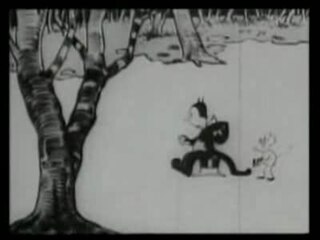
The Hearst-Vitagraph News Pictorial or Hearst-Vita graph was a short-lived company producing newsreels which were coupled with animated cartoons. It was established on 29 October 1915 by the Brooklyn-based Vitagraph Studios and the Hearst Corporation, and produced its first reel in February 1916, but folded in 1916. Previously, Hearst had produced newsreels together with the Selig Polyscope Company from 1914 on, and after the deal with Vitagraph ended Hearst teamed up with Pathé.
Frederick Burr (1887–1915) was an English cricketer.
Notable events of 1932 in comics.

















